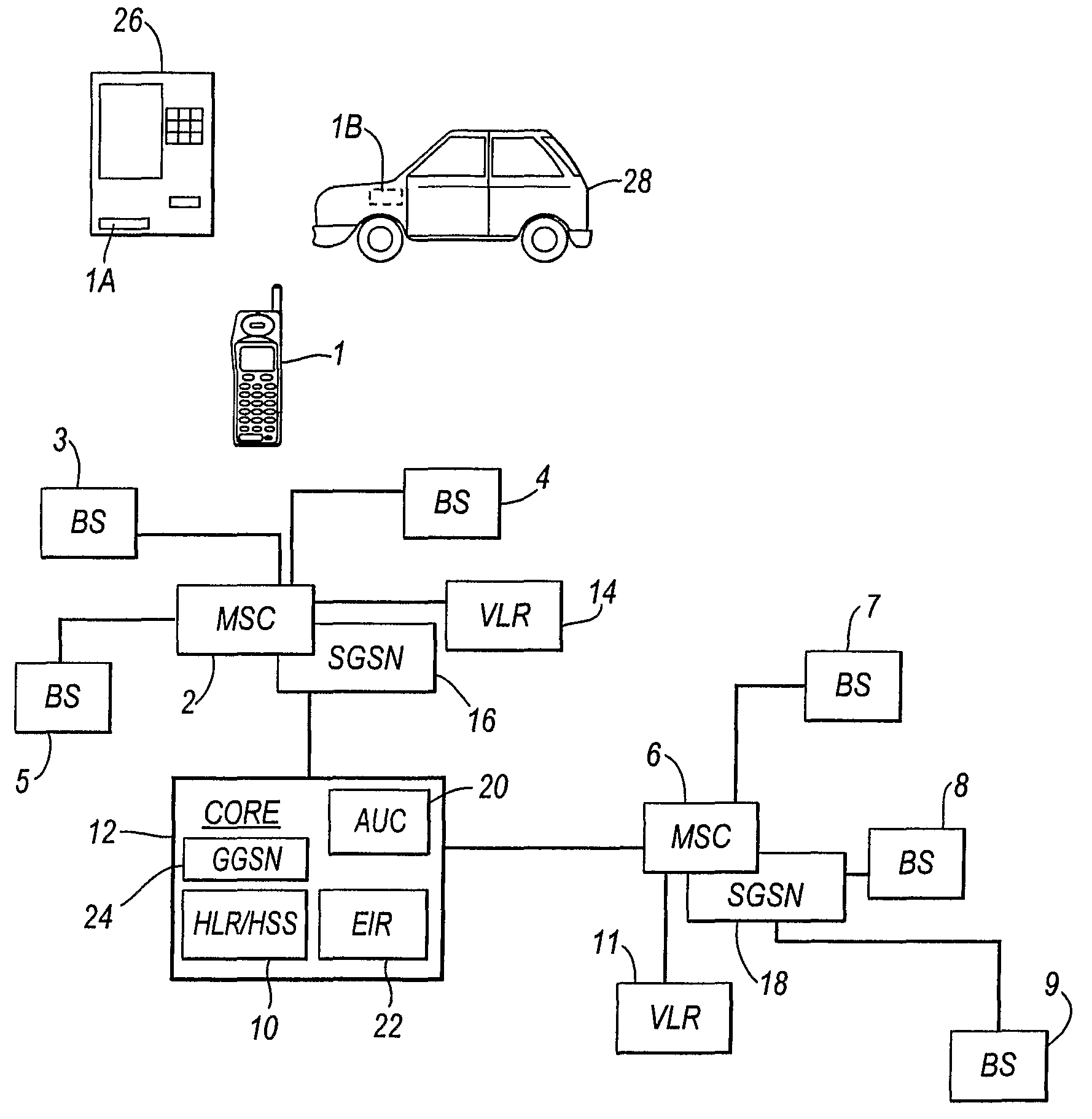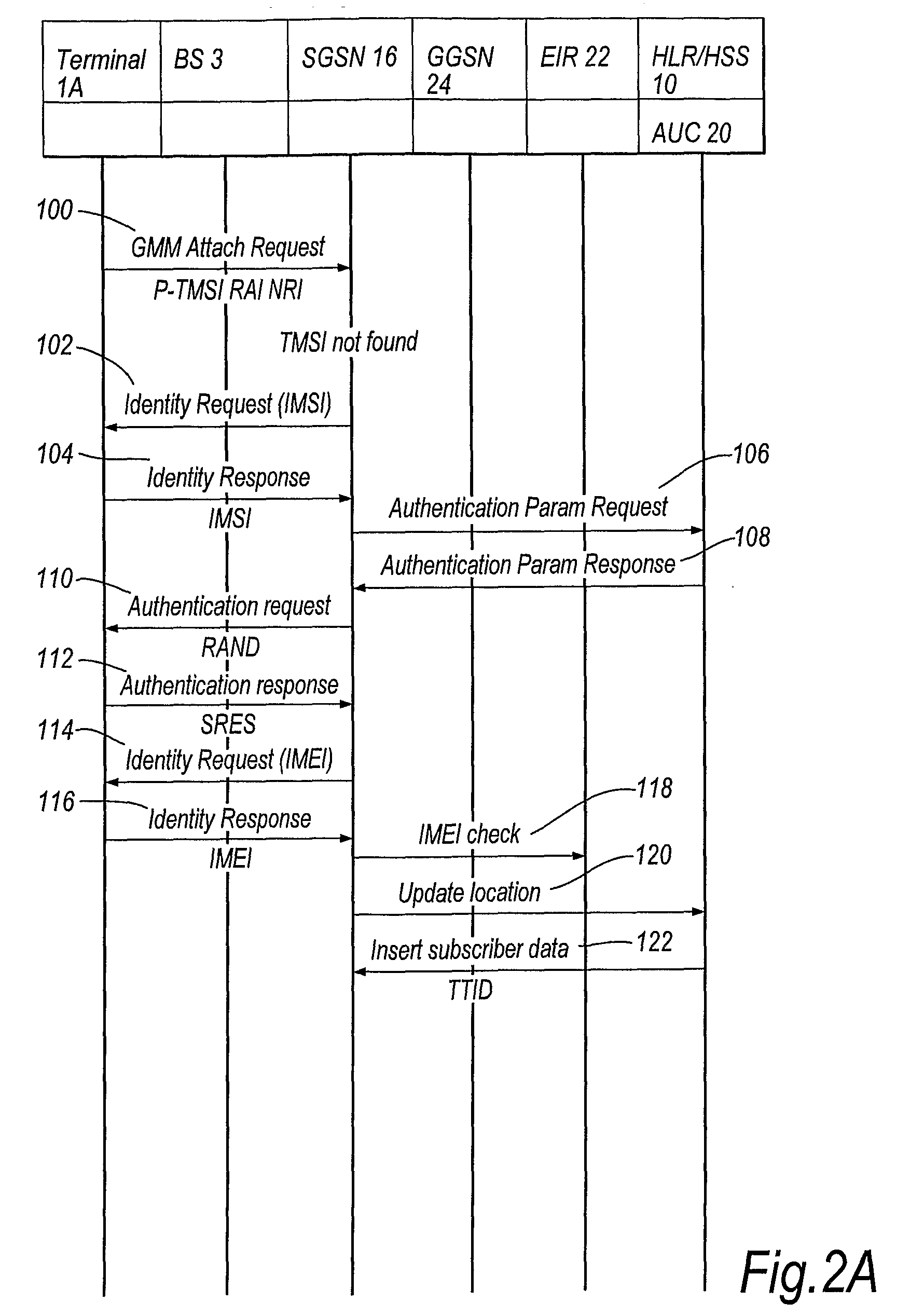Provision of Position Information in Telecommunications Networks
a technology of position information and telecommunications network, applied in the field of telecommunications network, can solve the problems of low (or no) geographic mobility of devices, waste of network resources, and huge amount of network signalling, and achieve the effect of saving valuable network resources
- Summary
- Abstract
- Description
- Claims
- Application Information
AI Technical Summary
Benefits of technology
Problems solved by technology
Method used
Image
Examples
first embodiment
[0059]In the first embodiment the terminal 1A is incorporated in a vending machine 26 that is fixed in position—for example, attached to the wall of a building. Because the terminal 1A and vending machine are fixed in position, once the network has been provided with an indication of the position of the terminal 1A, the network has no need for periodic updates of the terminal 1A's position. The network will always know in which cell the terminal 1A is located, and can therefore direct calls to the terminal 1A to that cell, without requiring paging of the terminal 1A using the routing area / location area information in the conventional manner discussed above. Accordingly, there is no need for the terminal 1A to perform periodic routing area updates / location area updates. In accordance with an important feature of the embodiment, the subscriber data of the terminal 1A stored on the HLR / HSS 10 is modified to include a terminal type identifier (TTID). For example, this terminal type iden...
second embodiment
[0092]The terminal 1B in the second embodiment may operate in the PS and / or CS domains.
[0093]In the embodiments the terminals 1A, 1B or the network may initiate the GPRS detach procedure and move to the idle state.
[0094]After expiry of the mobile reachable timer (a timer that checks for reception of the PRAU / PLAU of each terminal) the SGSN may perform an implicit detach in order to return the GMM context in the SGSN to an idle state. The GMM and PDP context may then be deleted.
[0095]If the network supports the Gs interface (an interface between the SGSN 16 and MSC 2) then it is possible to coordinate attachment and detachment, and LA and RA updates, of terminals that are both GPRS-attached and IMSI-attached.
[0096]Class C terminals (PS only) can only be paged in the ready or standby states (not in the idle state). Such devices could be paged by de-synchronising the SGSN 16 and the terminal state machines for some terminal applications.
[0097]Existing standards permit the SGSN and MSC / ...
PUM
 Login to View More
Login to View More Abstract
Description
Claims
Application Information
 Login to View More
Login to View More - R&D
- Intellectual Property
- Life Sciences
- Materials
- Tech Scout
- Unparalleled Data Quality
- Higher Quality Content
- 60% Fewer Hallucinations
Browse by: Latest US Patents, China's latest patents, Technical Efficacy Thesaurus, Application Domain, Technology Topic, Popular Technical Reports.
© 2025 PatSnap. All rights reserved.Legal|Privacy policy|Modern Slavery Act Transparency Statement|Sitemap|About US| Contact US: help@patsnap.com



